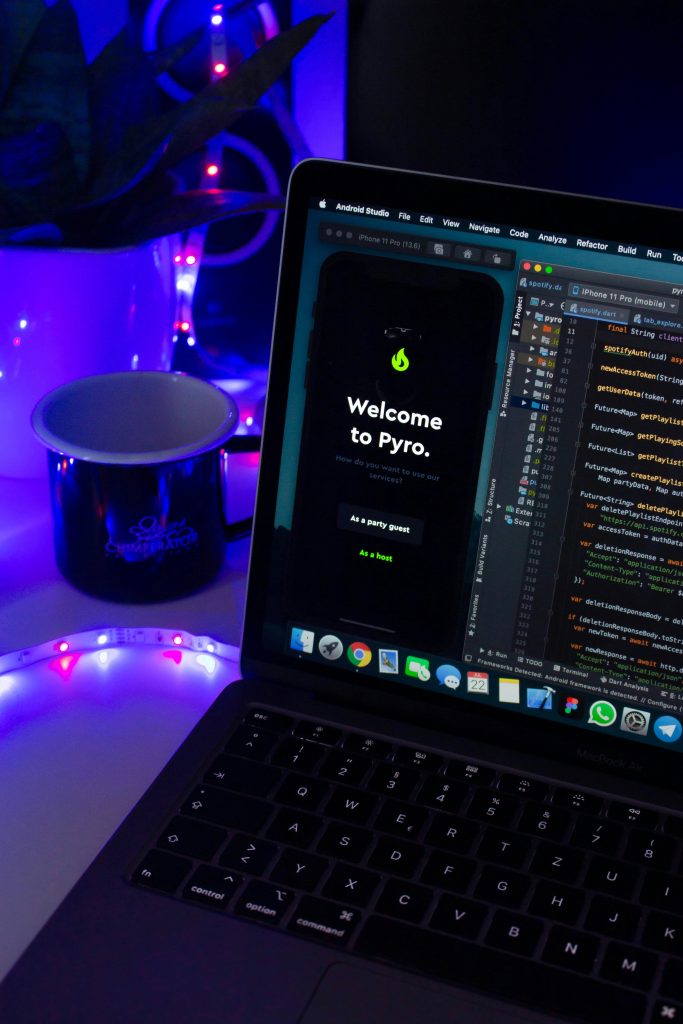10 Most Features for Creating Killer AI-Powered Apps

You’re navigating the realm of AI-powered apps, seeking that winning edge. Picture this: a fusion of cutting-edge technology and user-centric design. Natural Language Processing, Image Recognition, and Predictive Analytics are just the tip of the iceberg. With features like Sentiment Analysis and Recommendation Systems, your app could revolutionize user experiences. But, hold on tight; we’re just scratching the surface of what’s possible. Stay tuned to uncover how these 10 features can propel your app to greatness.
Natural Language Processing
To incorporate Natural Language Processing into your AI-powered apps, you must first understand its capabilities and applications. By utilizing NLP, your apps can analyze, understand, and generate human language, enhancing user interactions and improving overall user experience.
One key application of NLP is sentiment analysis, which allows your app to gauge the emotions and opinions expressed in text data, providing valuable insights for decision-making.
Furthermore, NLP enables your app to perform text summarization, automatically condensing large amounts of text into concise summaries. This feature is particularly useful for news aggregation apps or content platforms.
Additionally, with NLP, your AI-powered apps can offer language translation services, breaking down language barriers and reaching a wider audience.
Incorporating Natural Language Processing into your apps opens up a world of possibilities, from chatbots that can hold natural conversations with users to personalized recommendation systems based on textual data analysis. Understanding NLP’s capabilities empowers you to create innovative and engaging AI-powered apps that cater to the needs and preferences of your users.
Image Recognition
Image recognition technology rapidly identifies objects in images, enhancing the functionality of AI-powered apps. By leveraging complex algorithms, AI can accurately classify and detect various elements within visual content. This feature enables apps to provide users with advanced capabilities such as automatic tagging of photos, visual search functions, and augmented reality experiences.
Imagine being able to simply point your phone at a landmark and instantly receive information about it, all thanks to image recognition powered by AI. Additionally, businesses can utilize this technology to streamline processes like quality control in manufacturing or automate inventory management by visually identifying items.
Integrating image recognition into AI-powered apps opens up a world of possibilities for enhancing user experiences and driving efficiency. From improving accessibility for visually impaired individuals to revolutionizing e-commerce through virtual try-on features, the impact of this technology is vast. As developers continue to refine image recognition algorithms, the potential for creating innovative and engaging apps will only grow.
Predictive Analytics
Harness the power of predictive analytics to anticipate future trends and behaviors within your AI-powered apps. By utilizing historical data and machine learning algorithms, predictive analytics can help you make informed decisions and forecasts.
This feature enables your app to identify patterns, predict outcomes, and provide valuable insights to users.
With predictive analytics, you can enhance user experiences by personalizing recommendations, anticipating user needs, and offering tailored content.
By analyzing data patterns, your app can proactively address potential issues, optimize processes, and improve overall performance.
Moreover, predictive analytics can assist in resource allocation, risk management, and strategic planning. By forecasting demand, trends, and customer behavior, your app can adapt and respond effectively to changing circumstances.
Incorporating predictive analytics into your AI-powered apps can give you a competitive edge, increase efficiency, and drive better decision-making.
Stay ahead of the curve by leveraging this powerful tool to anticipate, strategize, and enhance the functionality of your applications.
Recommendation Systems
Utilize recommendation systems to enhance user engagement and drive personalized experiences within your AI-powered apps.
By implementing recommendation systems, you can offer users tailored suggestions based on their preferences and behavior patterns. These systems analyze user data to provide relevant content, products, or services, increasing user satisfaction and retention.
One key benefit of recommendation systems is their ability to boost user engagement by presenting personalized recommendations that align with individual interests. This not only enhances the user experience but also encourages users to spend more time interacting with your app.
Moreover, recommendation systems can significantly impact your app’s success by increasing conversion rates and driving revenue. By showcasing items that are highly likely to interest users, you can improve sales and customer satisfaction simultaneously.
Sentiment Analysis
Analyze user sentiments to gain valuable insights and enhance user interaction in your AI-powered apps. Sentiment analysis, also known as opinion mining, allows your app to understand and interpret emotions and opinions expressed by users in text data.
By employing sentiment analysis, you can gauge user satisfaction, identify trends, and tailor user experiences accordingly. This feature enables your app to respond empathetically to users, leading to improved customer satisfaction and loyalty.
Through sentiment analysis, your AI-powered app can categorize feedback as positive, negative, or neutral, providing you with a comprehensive overview of user opinions. By analyzing sentiment, you can detect patterns in user behavior, preferences, and sentiments, allowing you to make data-driven decisions to enhance your app’s functionality and user engagement.
Leveraging sentiment analysis in your AI-powered apps equips you with the tools to understand user sentiment at scale, enabling you to create personalized experiences that resonate with your audience.
Speech Recognition
How can speech recognition technology enhance the functionality of your AI-powered apps?
By incorporating speech recognition capabilities, your apps can offer users the convenience of interacting with technology through voice commands. This feature enables hands-free operation, making tasks quicker and more efficient. Imagine being able to dictate messages, search for information, or control devices using just your voice.
Speech recognition can also improve accessibility by catering to users with disabilities or those who prefer verbal communication. This inclusivity can broaden your app’s user base and make it more user-friendly for a diverse audience. Moreover, integrating speech recognition can enhance user experience by providing a more natural and intuitive interaction method.
With advancements in speech recognition technology, the accuracy and speed of converting spoken words into text have significantly improved. This means your AI-powered apps can better understand user inputs, leading to more personalized and effective responses.
Machine Learning Algorithms
Machine learning algorithms power the intelligence behind AI-driven applications, enabling them to learn from data and make informed decisions autonomously. These algorithms are the backbone of AI systems, allowing them to analyze vast amounts of data to recognize patterns, make predictions, and continuously improve their performance.
Popular machine learning algorithms include linear regression for predicting numerical values, decision trees for classification tasks, and neural networks for complex pattern recognition.
One key aspect of machine learning algorithms is their ability to adapt and evolve as they’re exposed to new data. This adaptability is what enables AI-powered apps to become smarter over time, delivering more accurate results and enhancing user experiences.
Data Visualization
Explore the visual representation of data through charts and graphs in AI-powered apps to enhance understanding and insights. Data visualization plays a crucial role in simplifying complex information, making it easier for users to grasp patterns and trends at a glance.
By incorporating interactive visual elements, such as dynamic charts or heatmaps, AI-powered apps can provide users with a more engaging and intuitive way to interact with data.
Through data visualization, users can quickly identify correlations, outliers, and anomalies within their datasets, enabling them to make informed decisions based on data-driven insights. Visual representations like scatter plots, bar graphs, and pie charts can effectively communicate key findings, helping users extract valuable knowledge from large volumes of data more efficiently.
Furthermore, data visualization in AI-powered apps can facilitate storytelling by presenting information in a visually compelling manner. By leveraging graphical representations, developers can create impactful visual narratives that convey complex concepts in a clear and accessible way, enhancing the overall user experience and driving better decision-making processes.
Real-time Processing
Utilize real-time processing in AI-powered apps to enhance responsiveness and deliver dynamic user experiences. By incorporating real-time processing capabilities, your app can provide instant updates and insights based on the most recent data available. This feature allows for immediate responses to user actions, ensuring a seamless and interactive interface.
Real-time processing enables your app to react swiftly to changing conditions, making it ideal for applications requiring up-to-the-second information. Whether it’s real-time analytics, live chat support, or dynamic content updates, this functionality keeps your users engaged and informed in the moment.
Additionally, real-time processing enhances the overall performance of your AI-powered app by reducing latency and improving the speed of data processing. This results in smoother interactions and a more fluid user experience.
Personalization Techniques
Incorporate personalization techniques into your AI-powered apps to tailor user experiences and boost engagement effectively. By implementing machine learning algorithms, you can analyze user behavior and preferences to provide customized recommendations and content.
Utilize collaborative filtering to suggest items based on similar users’ preferences, enhancing the user’s experience and increasing satisfaction.
Another powerful personalization technique is content-based filtering, which recommends items to users based on their past interactions and preferences. By understanding user preferences, you can offer personalized product recommendations, articles, or services that are more likely to resonate with each individual user.
Furthermore, incorporating contextual personalization allows you to deliver relevant content based on the user’s current context, such as location, time, or browsing history. This real-time adaptation enhances user engagement by providing timely and tailored information.
Conclusion
In conclusion, incorporating features like Natural Language Processing, Image Recognition, and Predictive Analytics are essential for creating killer AI-powered apps.
Additionally, integrating Recommendation Systems, Sentiment Analysis, and Machine Learning Algorithms can enhance user experiences and drive engagement.
With Data Visualization, Real-time Processing, and Personalization Techniques, your app can stand out in the competitive market and provide value to users.
Keep these features in mind as you work on developing your next AI-powered application.
 English
English 

















